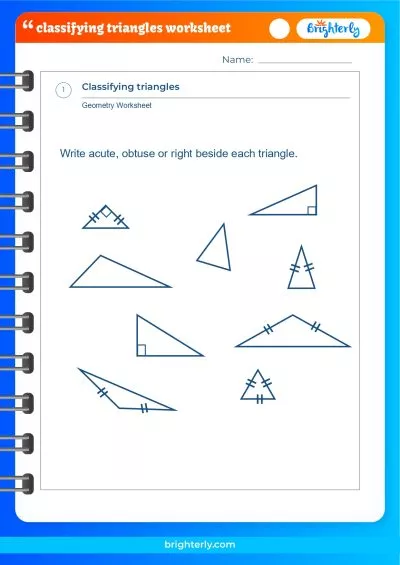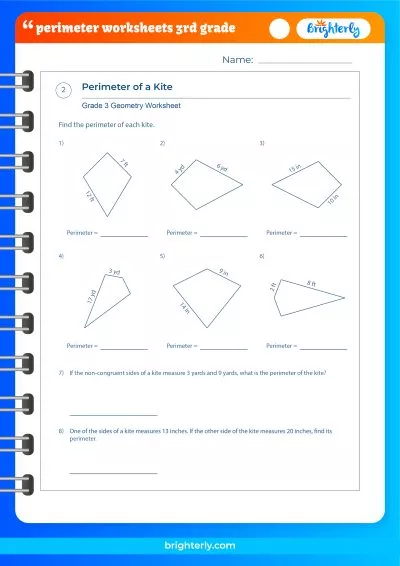Side – Definition With Examples
Updated on January 4, 2024
Welcome to another informative post from Brighterly, your go-to platform for all things related to kids’ education! Today, we’ll dive into the fascinating world of geometry, specifically looking at the concept of a ‘Side’. Whether your child is just starting out with geometry or needs a little refresher, this blog post is the perfect guide to understanding this crucial geometrical concept.
Here at Brighterly, we believe in making learning fun, interactive, and understandable. We’ll be breaking down the topic into easy-to-understand sections, filled with relatable examples and high-quality content that’ll make your child’s learning journey more engaging. So, let’s embark on this mathematical adventure together!
What Are Sides in Geometry?
Just as an artist uses lines to create beautiful drawings, geometry uses sides to build shapes and figures. In simple terms, a ‘Side’ is a line segment that forms part of a polygon or a polyhedron. For instance, in a square, each straight edge is a side. Similarly, in a cube, each edge is considered a side. Understanding sides is essential to decipher complex geometrical problems, making learning this concept an integral part of the mathematics curriculum at Brighterly.
Definition of a Side in Polygons
A polygon is a flat shape with straight sides. Whether it’s a triangle, a pentagon, or an octagon, the term ‘Side’ refers to each of the straight line segments that connect consecutive points on the polygon. For instance, a rectangle has four sides that are either vertical or horizontal.
Definition of a Side in Polyhedra
Moving from two-dimensional polygons to three-dimensional polyhedra, a side is the line segment where two faces of the polyhedra meet. For example, in a cube, the edges where the square faces meet are its sides. The term ‘Side’ can also be used to refer to the faces of the polyhedra.
Properties of Sides in Polygons
The sides of polygons have specific properties that dictate the shape’s behavior and characteristics. For instance, the length of the sides of a polygon determines its area and perimeter. Moreover, polygons can be classified as regular or irregular based on whether their sides are of equal length or not.
Properties of Sides in Polyhedra
The sides of a polyhedron serve as bridges between its faces and vertices. The total number of sides, their length, and how they connect the vertices, govern the overall shape and volume of the polyhedron. For example, in a regular tetrahedron, all sides are of equal length, connecting each vertex to every other vertex, forming four equilateral triangles.
Differentiating Between Sides in Various Shapes
Understanding the difference between the sides of different shapes is vital. For instance, all sides of a square are equal, while in a rectangle, opposite sides are equal. Similarly, in a 3D shape like a cube, all sides are equal, while in a rectangular prism, sides may vary.
Equations Involving Sides
In geometry, sides play a crucial role in forming equations. The sides of polygons and polyhedra often represent variables or constants in equations that express the shape’s area, perimeter, or volume.
Writing Equations for Sides of Polygons
When we delve into the world of polygons, the significance of sides comes to the fore. Sides are the building blocks of polygons and their characteristics – such as length – are key to formulating mathematical equations.
Take, for instance, a square. This shape, a regular polygon, is defined by having all sides equal in length. We represent this length by ‘s’. Now, since a square has four equal sides, its perimeter (the total distance around the shape) is simply 4 times the length of one side, giving us the equation P = 4s.
Similarly, the area of a square (the amount of space inside the shape) is defined as the length of a side squared. This gives us the equation A = s^2.
But polygons are not limited to squares. A rectangle, another common polygon, also has its sides define key characteristics. Although not all sides are equal, the opposite sides of a rectangle are. If we denote the length as ‘l’ and the width as ‘w’, the perimeter is given by P = 2l + 2w and the area by A = lw.
These examples illustrate the critical role sides play in deriving mathematical equations in polygons.
Writing Equations for Sides of Polyhedra
Sides are equally significant in the world of three-dimensional shapes or polyhedra. Let’s use the example of a cube, a regular polyhedron, where all faces are squares and, therefore, all sides are equal.
If ‘a’ represents a side’s length, the volume ‘V’ (the amount of space a shape occupies) of a cube is calculated by cubing the length of a side, thus the equation V = a^3.
In contrast, the surface area ‘SA’ (the total area of the shape’s surface) is given by the area of one face (a^2) times the number of faces (6 for a cube), leading to the equation SA = 6a^2.
Understanding the importance of sides in formulating these equations is a fundamental aspect of learning geometry.
Practice Problems on Sides in Geometry
Practicing problems related to sides in geometry is not only essential for consolidating knowledge, but it can also be an exciting and rewarding experience. Brighterly has dedicated a significant portion of its platform to offer a variety of practice problems to enhance understanding and confidence in tackling geometry problems.
Here are a few sample problems:
- Given a square with side length 5 units, what is its area and perimeter?
- A rectangle has a length of 6 units and a width of 4 units. Calculate its area and perimeter.
- If a cube has a side length of 3 units, what are its volume and surface area?
Solving such problems allows students to apply their understanding of sides in real-world scenarios. And with Brighterly, the learning process is made interactive and enjoyable, thereby fostering a deeper understanding and love for geometry.
Conclusion
As we wrap up this enriching journey through the concept of ‘Sides’ in geometry, we hope you now appreciate the indispensable role that sides play in shaping the world of shapes and figures. As with any mathematical concept, practice is the key to mastery, and that’s why we at Brighterly provide a plethora of practice problems for your children to hone their skills.
However, learning should never stop here! Geometry, like all areas of mathematics, is an expansive field with limitless knowledge to explore. Remember, every side, every angle, every shape contributes to a broader understanding of our world, and we at Brighterly are dedicated to illuminating this pathway for your children’s learning adventure.
Frequently Asked Questions on Sides in Geometry
What is the side of a shape?
The side of a shape, in basic terms, refers to the line segment that forms part of a polygon or polyhedron. For example, in a square or rectangle, the straight lines you see around the shape are its sides.
Are all sides of a polygon the same length?
Not necessarily. In regular polygons, all sides are of the same length. This includes shapes like a square or a regular hexagon. However, in irregular polygons, the sides can have different lengths.
How do sides affect the properties of a shape?
Sides play a crucial role in defining a shape’s properties. In polygons, the length and number of sides determine the area and perimeter. In polyhedra, the sides influence the overall shape, volume, and surface area.
Can we write equations usiтng the sides of a shape?
Absolutely! The sides of shapes often represent variables or constants in equations expressing a shape’s properties like its area, perimeter, or volume. For instance, in a square where ‘s’ is the side length, the area can be calculated as s^2 and the perimeter as 4s.
Information Sources:
- Polygon – Wikipedia
- Polyhedron – Wikipedia
- Learning Geometry – Brighterly






